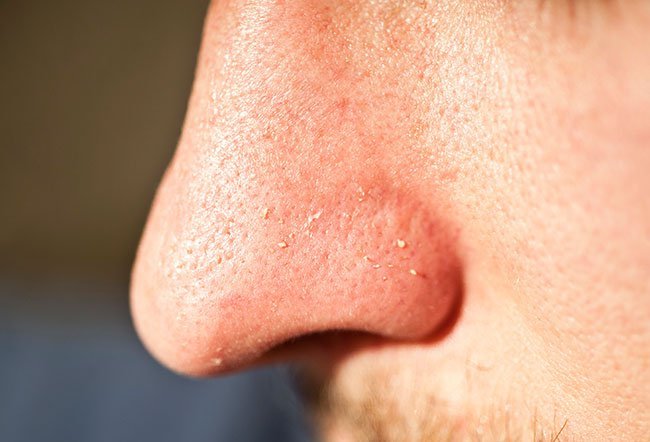Can You Get Rid of Sebaceous Filaments?

Sebaceous filaments can never be completely removed. If they are extracted, they return quickly, usually within 30 days or less for those with very oily skin. Therefore, experts advise against taking them out since sebaceous filaments are more difficult to remove.
Picking at sebaceous filaments almost always results in scarring and irritation, which may even cause the spot to erupt and lead to clogged pores and infection. Sebaceous filaments are a normal way for the body to nurture and maintain the balance of the oils on the skin. The issue is that some people produce too much sebum, which causes these filaments to grow in size. Even though sebaceous filaments cannot be completely removed, they can be shrunk to the point where they are nearly invisible.
Try the following simple methods to reduce oily sebum secretion on the skin:
- Stop picking at sebaceous filaments all the time.
- Begin and stick to a daily skincare routine.
- Using pore strips on the nose is a quick and effective way to get rid of sebaceous filaments (temporarily).
- Use any of the following products to exfoliate the skin and unclog the troublesome pores:
- Salicylic acid (or butylated hydroxyanisole)
- Benzoyl peroxide
- Mandelic acid
- Tea tree oil
- Use a clay mask after exfoliating.
- As a cleanser, use mild but thick cleansing oils (medicated mineral oil) that penetrate the skin and act as a sebum remover.
- Regularly use a moisturizer and apply sunblock as this may keep sebaceous filaments at bay and reduce the likelihood of acne and blackheads development.
- Retinoids or simply retinol can be very effective at removing sebaceous filaments from the face. If the skin is extremely sensitive, start by incorporating it one time a week into the skincare routine and gradually increase the frequency of use. As a result, the skin will get accustomed to it, reducing the appearance of sebaceous filaments on the face.
- Dermatologists also recommend chemical exfoliation with glycolic acid to shrink sebaceous filaments.
Medications
- If the simple methods fail, make an appointment with the local dermatologist and ask for supplements that can help combat the underlying cause of sebaceous filaments. Many supplements have been developed to promote healthier skin. They work by regulating sebum production and preventing inflammation.
- Accutane is a vitamin A–containing a drug that helps regulate sebum secretion through sebaceous glands and aids in cell regeneration and the reduction of debris in pores.
- Antibiotics are only used in extremely rare cases where sebaceous filament infections become chronic and dangerous.
Laser therapy
- Sebaceous filaments can be removed with light and laser treatments, which helps remove dark spots, blackheads, and whiteheads from the face.
- To reduce skin oil secretion, the doctor will use a concentrated beam of light. The top layer of the skin is not damaged because the beam light penetrates below the epidermis.
- Laser treatments are a compelling method of treatment, but they are not a permanent or long-term solution because the filaments may reappear soon.
To reduce the appearance of sebaceous filaments, choose the right skincare products by consulting the dermatologist.
What are the causes of sebaceous filaments?
Sebaceous filaments are hair-like structures found on the inside of the pore that help sebum move across the skin's surface. Sebaceous filaments are more common in people with oily skin or larger pores. They can be caused by a variety of factors.
The following are some of the most common causes of sebaceous filaments:
- Genetics
- Age
- Thicker hair follicles
- Exposure to the sun
What is the difference between sebaceous filaments and blackheads?
The appearances of blackheads and sebaceous filaments are nearly identical. When they are closely observed, the sebaceous glands have a yellow-grayish tint, whereas blackheads are completely black.
Blackheads are a type of acne that occurs when sebum and dead skin cells clog the pore and oxidize, resulting in a black bump. Blackheads will appear as raised, black bumps on the skin. Sebaceous filaments are very smooth and do not protrude from the face or leave bumps. Sebaceous filaments can sometimes be a precursor to blackheads.
